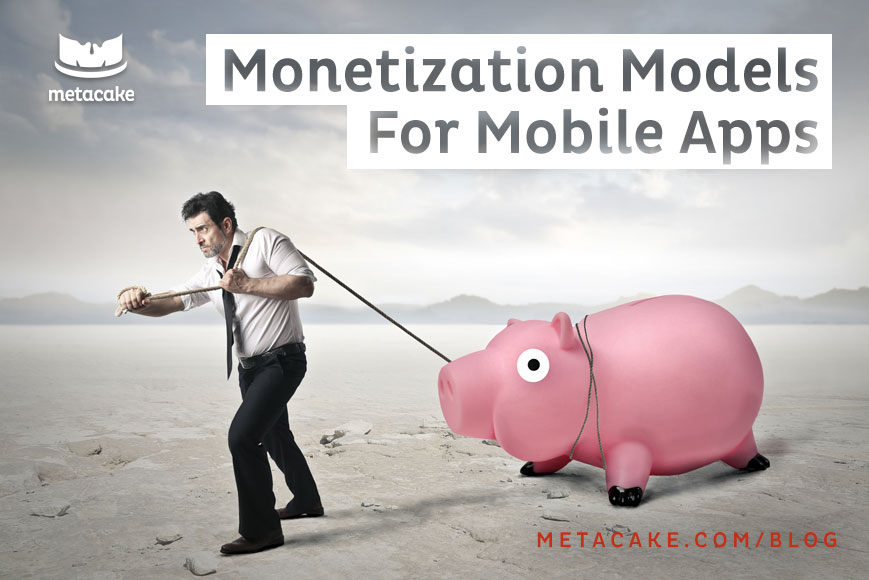Let’s start with a couple of harsh realities that you need to consider before you figure out how to monetize your app.
First, mobile apps are just like any other part of your marketing strategy – or your business.
If it’s not well executed, it will fail. Period.
Second, you don’t necessarily need a mobile app to create a first-class mobile experience for your customers. Based on our experience, a mobile-friendly website is usually the better investment.
But don’t let these facts burst your bubble. If you’ve determined that your company really needs an app – and, more importantly, that your customers will need and want your app – there are ways to make money from it.
Here are the most common monetization models for mobile apps.
Free with Ads
This is one of the most popular models, but it may also be the most frustrating. If you let the ads control the design and get in the way of the customer experience, this model won’t work.
You may succeed in getting users to download your app, but they’ll quickly become frustrated as ads are constantly popping up out of nowhere…
If you choose this model, you have to execute and integrate the ads the right way. Look at what Apple did with iAds. They focused on making the ads beautiful in both design and execution.
This isn’t exactly the most reliable business model because you need extremely heavy traffic volume to generate any meaningful revenue from advertising. It tends to make more sense for the advertiser than the app publisher.
Paid
Paid apps have to be exceptional because the bar for app pricing is set so low. It’s not easy to get people to pay $3 or even 99 cents for an app when the vast majority of apps are free.
People have the mindset that says, “If I’m going to pay anything for an app, it has to be awesome.” With free apps, people are willing to deal with minor issues and glitches. The “good enough” mentality doesn’t apply to paid apps.
Another challenge with paid apps is that the payment is a one shot deal. You need to constantly add users, release updates on a regular basis, or find other ways to generate revenue, like licensing. This requires a sizable marketing budget.
There will always be apps that people will pay for, but those apps have to be very unique or measurably better than the competition. Customers will always gravitate towards the free option unless your paid version blows the competition out of the water.
Free with In-App Purchases
According to Distimo, about 79 percent of iOS app revenue comes from free apps with in-app purchases (IAPs), or freemium apps. This is now the most profitable business model for mobile apps.
Of course, there’s a big difference between free with in-app purchases and a lame bait-and-switch. A lot of apps get bad reviews because they give you the app for free, but if you want to do anything beyond the most basic functionality, you have to pay for it.
The best example of how this model can succeed is probably Candy Crush.
Metacake founder Kenneth Ott has confessed to becoming addicted to Candy Crush.
And we never let him forget it.
Ken had never made an in-app purchase. But when he got to the end of a game, he had the choice of waiting 15 minutes to get all of his lives back, or pay 99 cents to get them back instantly. Guess what Ken did?
Of course, there are some hacks to get around that, but Ken can’t count the number of times he’s coughed up a buck to keep playing. Instead of trying to nickel-and-dime users because they didn’t win them over, Candy Crush wins over users and then allows them to make purchases. It’s an extremely successful business model.
Just ask Ken.
Free
The best and most successful free apps serve as an extension of an existing business. A free app is often used to simply enrich the user experience, provide additional value to the user, or serve a marketing purpose.
Obviously, if the app is free with no advertising and no in-app purchases, you’re not producing revenue directly through the app. You’re making your business more valuable, more enjoyable, or easier to interact with.
Subscription
The great thing about any subscription is that one subscription produces monthly revenue. But every month, users ask themselves, “Why should I continue to pay $4.99? What am I getting out of this?”
The content and value delivered each month needs to be compelling enough to convince users to keep paying for the subscription.
In this case, the app is an extension of the value of services being provided. It’s a delivery mechanism. You pay for the subscription and the app itself is free. For example, you don’t have to pay for the app for Netflix, Spotify or any number of productivity and project management tools. You just have to pay for the subscription.
So which monetization model is best?
That just depends on your target audience and your product.
Focus on making sure your company and customers really need an app first, and then make sure it’s executed well. Finally, choose a monetization model that will make your app profitable and will make sense for your customers.
